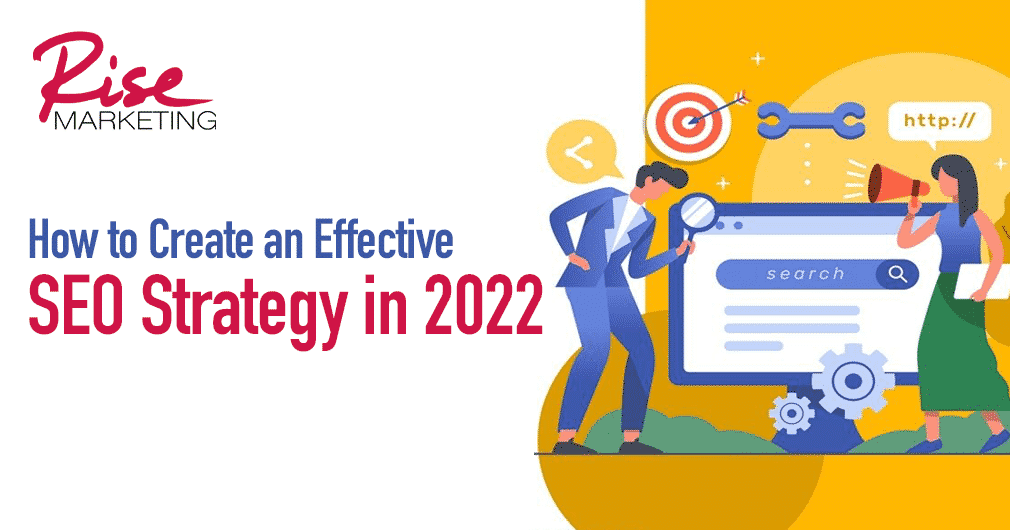
Discover 9 SEO Hacks 2022 and learn exactly how to create and execute an effective SEO strategy for your business, step-by-step. Effective SEO Strategy In 2022. This approach has helped many companies in Portland and nationwide increase their website traffic and generate new leads. If you’re looking to improve your SEO, existing rankings, or rank new keywords, this new guide is for you.
How to Create an Effective SEO Strategy In 2022
WHAT IS AN SEO STRATEGY?
An SEO strategy, SEO approach, or search engine optimization strategy is planning, outlining, and implementing steps to create a successful SEO business model and improve your business’s Google search engine rankings. SEO strategy is the process that you make to increase your organic website traffic and generate more leads.
Here are the main steps to create and improve SEO business strategy in 2022:
Step #1: Create a list of 25 keywords you want to rank.
Step #2: Analyze Google’s first page results for specific keywords you want to rank.
Step #3: Write an Original Title Tag and Meta Description.
Step #4: Add Backlinks to your website.
Step #5: Understand what is SEO.
Step #6: Optimize your content for search intent.
Step #7: Web design and UI design.
Step #8: Optimize your images and graphics.
Step #9: Keep your website up to date.
STEP #1: CREATE A LIST OF KEYWORDS.
Everything in any search engine optimization revolves around keywords. That’s why keyword research is the first on our list to create the last long SEO strategy. If you don’t have keyword search software, you can use Google Suggest to find the most common keywords. In that way, you can quickly discover and find new keywords customer searches for using Google. Type a keyword into Google’s search field, and Google will automatically populate a list of suggestions:
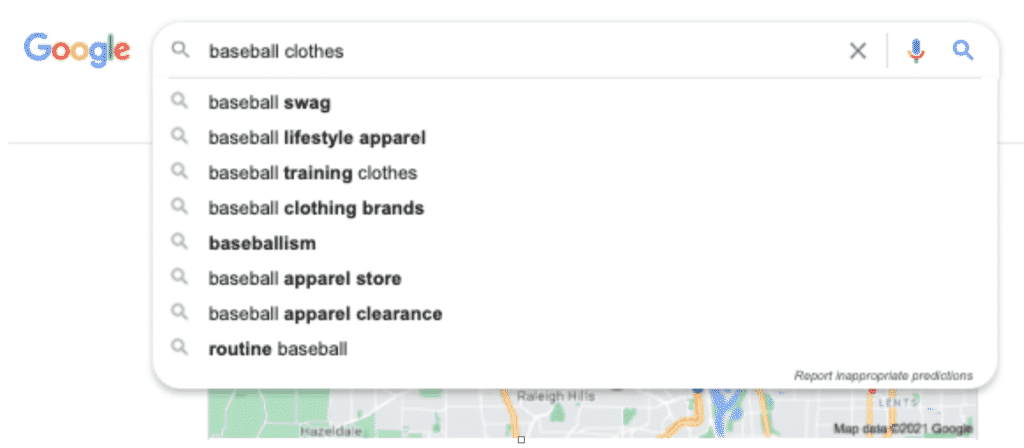
These usually make great keywords to implement to your website for SEO because they are coming straight from Google Suggest for the most common searches in Google. Also, longer keywords or long-tail keywords are, most of the time, less competitive and easier to rank than short-tail keywords.
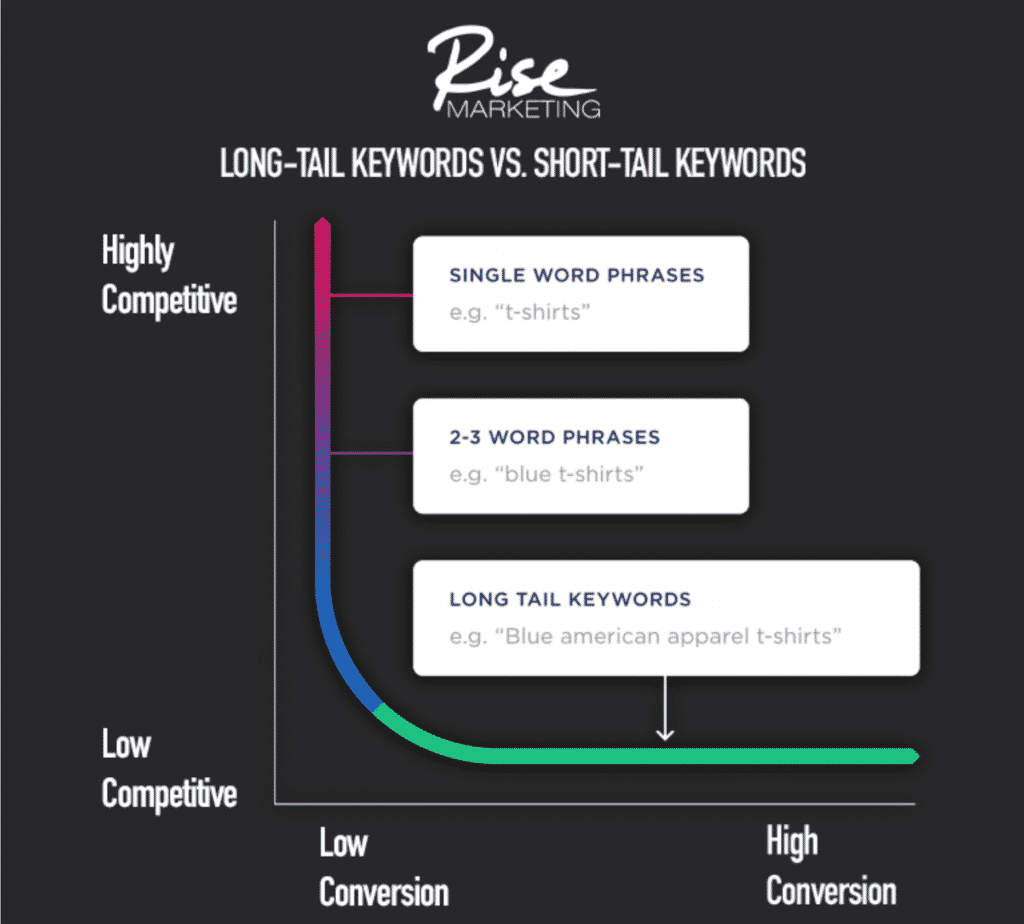
Even though long-tail keywords tend to have relatively lower search volume than short-tail keywords, you can usually rank for them faster.
Long-tail keywords also provide local SEO and more direct traffic to your website than short term keywords. I recommend putting together a list of 25 keywords for your website for a start. If you want to check rank difficulty and search volume for specific keywords, you can use keyword tools such as SEMrush or Spyfu.
STEP #2: ANALYZE GOOGLE’S FIRST PAGE RESULTS FOR SPECIFIC KEYWORDS YOU WANT TO RANK.
After finding the right keywords, the next step is to figure out what works for those keywords. To do that, type one of the keywords into Google search, for example, ” baseball lifestyle apparel.”
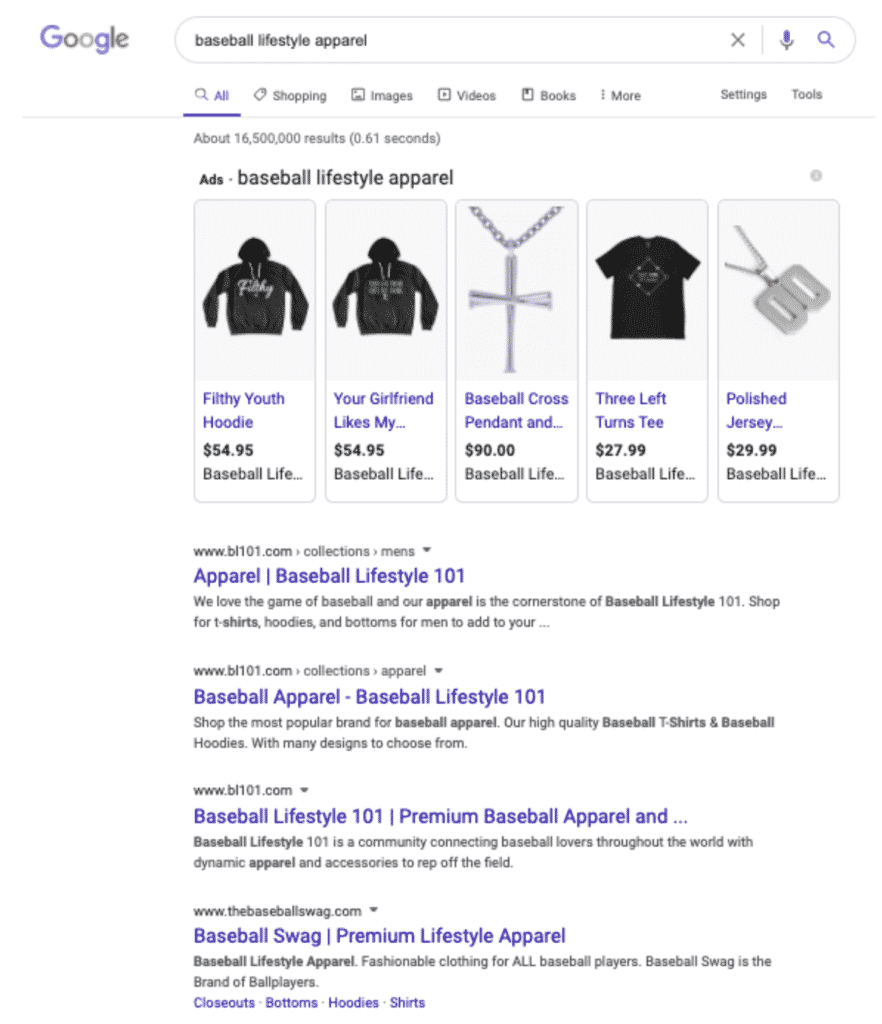
Look for any patterns that will help you rank and outrank your competition. For the keyword “baseball lifestyle apparel,” most of the pages are eCommerce sites with proper meta tag and meta description that targets that keyword.
STEP #3: WRITE AN ORIGINAL TITLE TAG AND META DESCRIPTION.
Title Tags
Title tags are clickable link headlines to your website that appear in search results. Title tags are essential for SEO rankings. There are no hard rules regarding the length of title tags. Usually, the recommended size of the title is about 70 characters, including spaces. For the best search engine optimization, try to keep the title length to about 65 characters. You can go as many as 70 characters in total, but try not to exceed that.
While creating title tags, remember to:
- Include target keywords.
- Match the search intent.
- Do not duplicate title tags.
- Avoid using too many keywords.
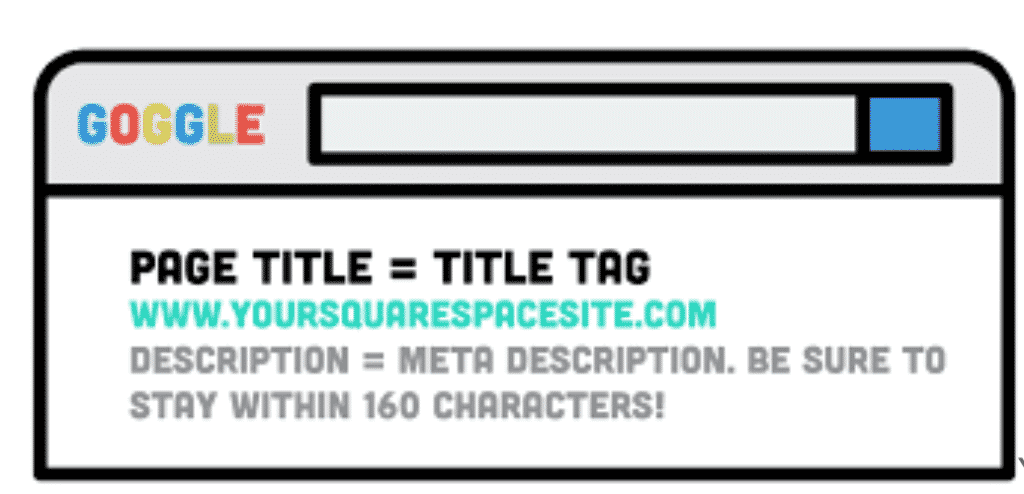
Meta Descriptions
Another most crucial meta tag is the meta description. The meta description is simply a brief summary of a website page that google displays below the page title.
Meta descriptions help influence click-through rates.
The length of the meta description should be somewhere between 150 to 160 characters, including spaces. Make sure you provide an accurate description of your website page content using no more than 160 characters.
While writing your meta descriptions, remember to:
- Write unique meta descriptions for each page.
- Use action-oriented copy.
- Include your target keywords.
- Match search intent.
- Provide an accurate summary.
STEP #4: ADD BACKLINKS TO YOUR WEBSITE.
If you are looking for ways to get free backlinks, you’re in luck! When it comes to your business and website, you have to decide whether you want to invest time or money. If you are looking for good quality free backlinks, you need to put the right amount of time into it. Try to reach out to industry publications and websites. How to find backlinks on Google?
Go to Google search and find blogs, directories, or publications that fit your website.
Use searches like:
- “baseball blogs”
- “baseball lifestyle blogs”
- “baseball guest post”
- “baseball magazines”
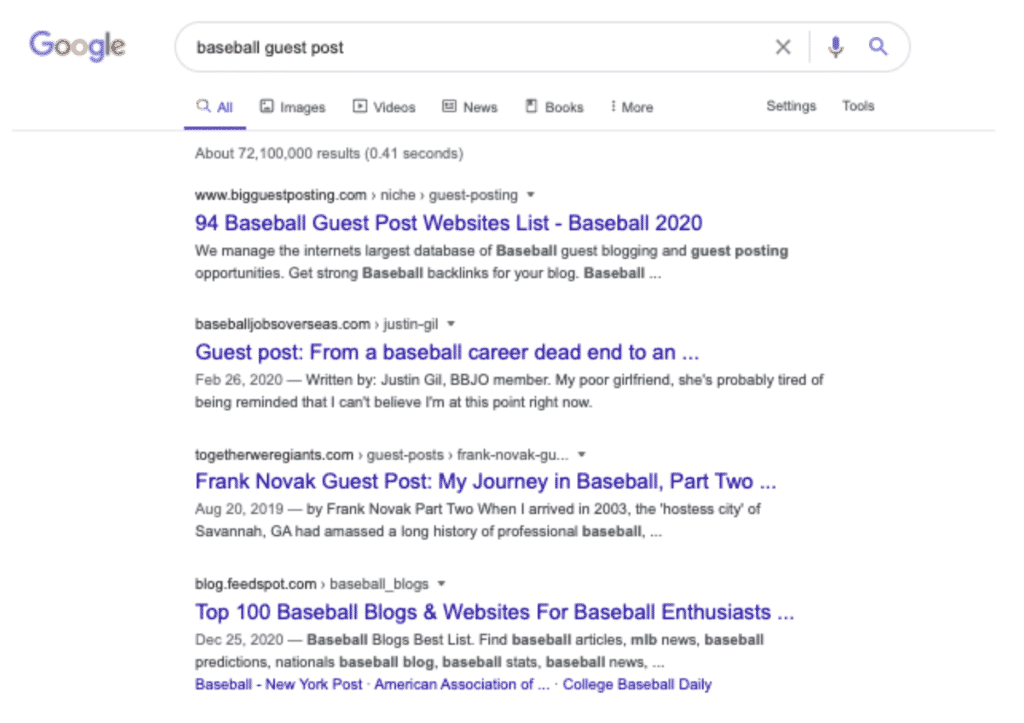
STEP #5: UNDERSTAND WHAT IS SEO.
What is SEO?
SEO stands for Search Engine Optimization. In short, SEO is the optimization of the website and other digital marketing platforms connected to your website and brand to provide better organic search engine results, increasing the quantity and quality of customer traffic to your website.
What goes into SEO?
To understand what goes into SEO, we need to break it down into three parts:
Quality of The Keywords and Traffic. When we think about Search Engine Optimization, we think about keywords. You can attract all the traffic you want to your website, but your website won’t generate any leads with the wrong keywords. Keywords can be misleading. For example, let’s say our client offers shipping and logistics solutions for businesses, and he ranks #1 on Google for ‘ship auto parts.’ However, people visiting the website and searching for those terms on Google weren’t the right people. People who searched for ‘ship auto parts’ were people like you and me, individuals with possibly one shipment, not big companies. Without the right keywords, you won’t get quality traffic to your website. You always want to attract visitors who are genuinely interested in the services or products that you offer.
Quantity of traffic. More traffic is better. Once you optimize your keywords and have the right people finding you in SERP (search engine results pages) (SERPs), your website will start generating more traffic to your business.
Organic results. Paid ads such as Google ad campaigns make up a significant portion of search results. Organic results are the traffic based on keyword rankings that you don’t have to pay.
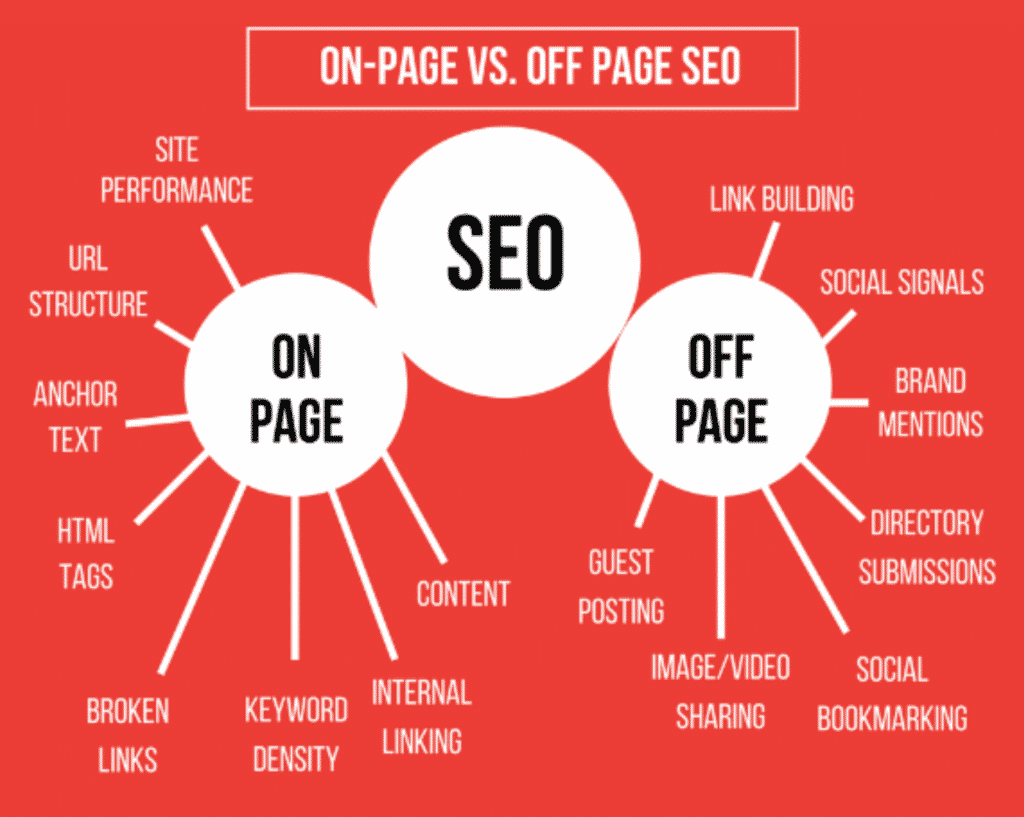
How SEO works
The search engine is like a website ( Google, Yahoo!, Bing) you visit and type keyword/question whenever you need help finding something online. In return, the search engine website uses algorithms replies with a long list of website links to match and potentially answer your question.
Here’s how it works. For example, Google (or any search engine website) has many crawlers that go out to the internet and collect information and updates about all the content you can find online 24/7. The crawlers bring all the information to search engines to build an index. Based on the index, Google can define and organize search results based on the keyword/question you put and show you the right results.
STEP #6: OPTIMIZE YOUR CONTENT FOR SEARCH INTENT.
Adjusting Your Website Content with Search Intent
Search intent or user intent is the purpose every user has behind every search query they put into Google. Understanding what people look for when they are using the search engine is Google’s priority. Pages that rank #1-10 on Google have all passed Google’s search intent test. For example, take a look at the search results for “how to make pasta.” For that keyword, the top search results are mostly blog posts or video content, not eCommerce stores selling pasta. It’s essential for Google to understand that typing that specific keyword is looking to learn, not to buy.
On the other hand, the best search results for keywords like “buy pasta” are mostly from eCommerce stores. Google understands that people who are typing that specific keyword are most likely to want to buy something. That’s why the top results don’t include links to any recipes.
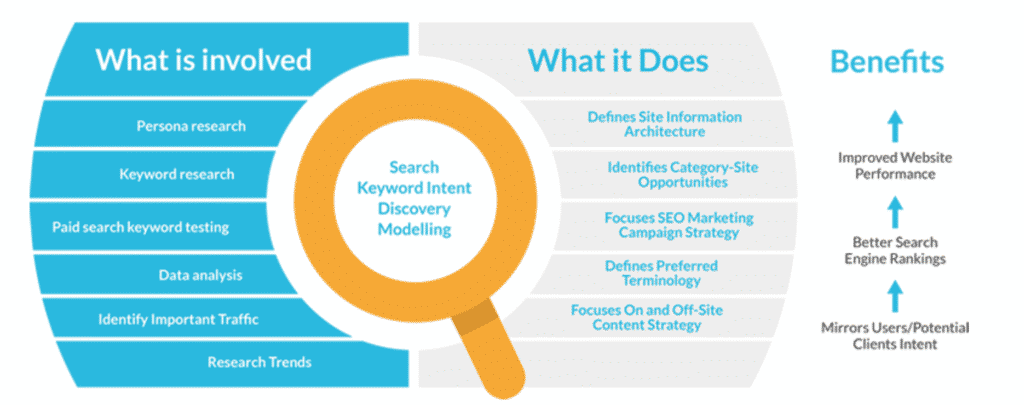
If you would like to rank your website on the first page of Google in 2021, you need to know that the concept of search intent in creating your website content is essential.
There are four main types of search intent for Google:
Informational: Informal content intent is when you are looking for specific information in search by typing questions in Google like “what’s the best SEO practices 2021?” which provides instant search results.
Navigational: When the person is looking for a specific website or app by typing keywords such as “Facebook,” “Google my business account,” or “Amazon login.”
Commercial: Commercial intent is when a person is looking for a specific product but didn’t make the purchase decision yet. For example, searches such as “best gifts for her” and “best drones to buy” are all commercial keyword searches.
Transactional: When the person is looking to buy a specific product or service. For example, “buy Mavic pro 2,” or “buy a MacBook pro.”
To rank higher on google, you need always to know what search intent you are going after while creating content for your site. Create content that helps with the search intent of your target audience and customers.
STEP #7: WEB DESIGN AND CONTENT DESIGN.
Web design might be the most underrated part of content marketing.
You can have the best content on your website, but if your website looks like this, you won’t get many leads.
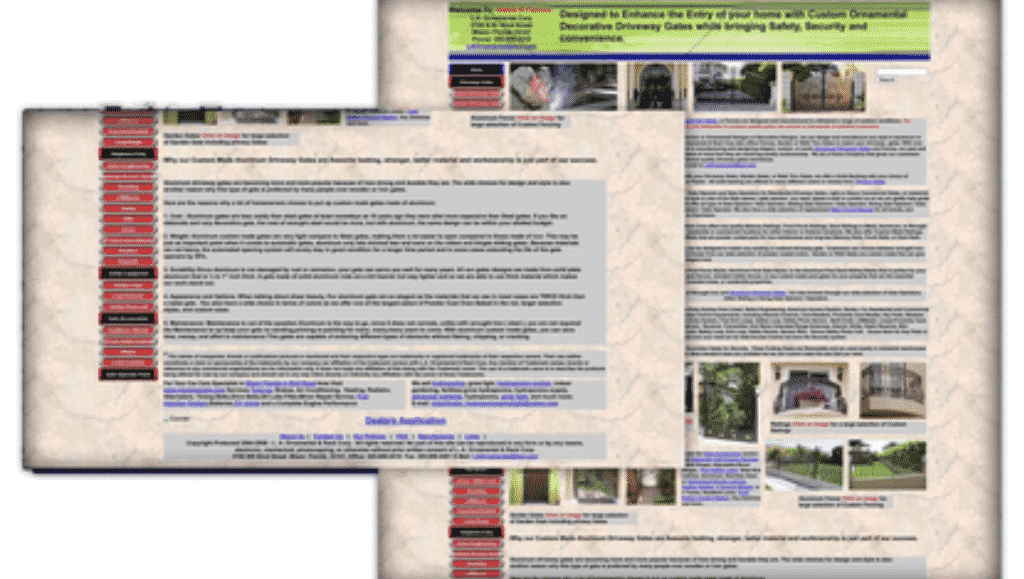
If you are looking for designers to create your website, make sure they design a user-friendly and accessible website for your business. However, suppose you already have a website. In that case, you can always create a site audit to optimize it and provide a better user experience for customers. This is what good web design and a friendly user interface should look like:
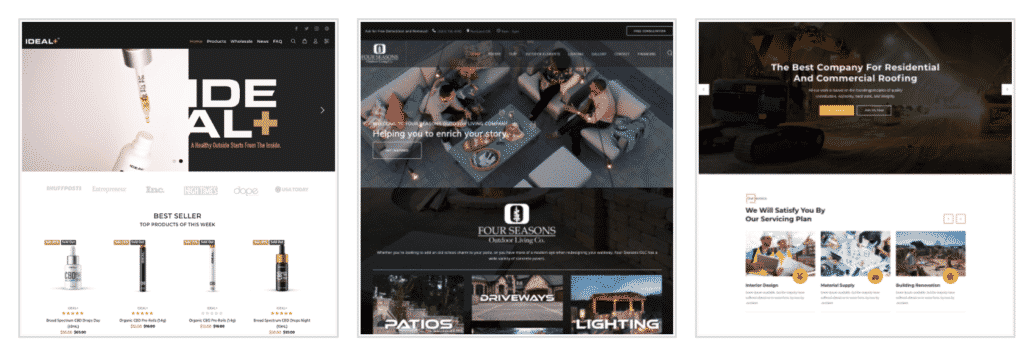
STEP #8: OPTIMIZE YOUR IMAGES AND GRAPHICS.
Images and graphics play an essential role in the user experience of customers that visit your website. Web developers, content writers, and creators spend a lot of time selecting the right graphics to improve their blog posts, product pages, and others on their websites.
However, even more, important is to optimize the images on the website. Optimizing the images can improve the site’s overall SEO and boost organic traffic. Here are four things you can do to optimize images on your website.
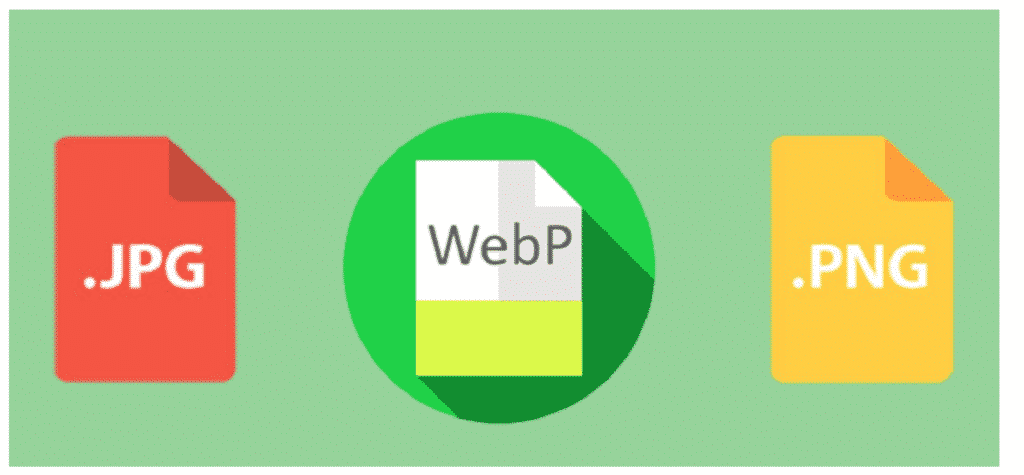
Looking at all the different formats, definitely the most common is JPEG. However, it would be a mistake to use a JPEG format for your website. While JPEGs look great, PNGs are best for images that have text, line drawings, etc.
WebP is another option, which Google breaks down here. According to Google, “WebP is a modern image format that provides superior lossless and lossy compression for images on the web. Using WebP, webmasters, and web developers can create smaller, richer images that make the web faster. WebP lossless images are 26% smaller in size compared to PNGs. WebP lossy images are 25-34% smaller than comparable JPEG images at equivalent SSIM quality index.”
Here is the Google guide explaining more about the WebP format.
Compress Your Images
The larger your image size is, the longer your website will load, which is why it is important to compress your images before uploading them to the website. However lucky for you, there are many free tools to help you compress your images, such as TinyPNG, ImageOptim or ShortPixel.
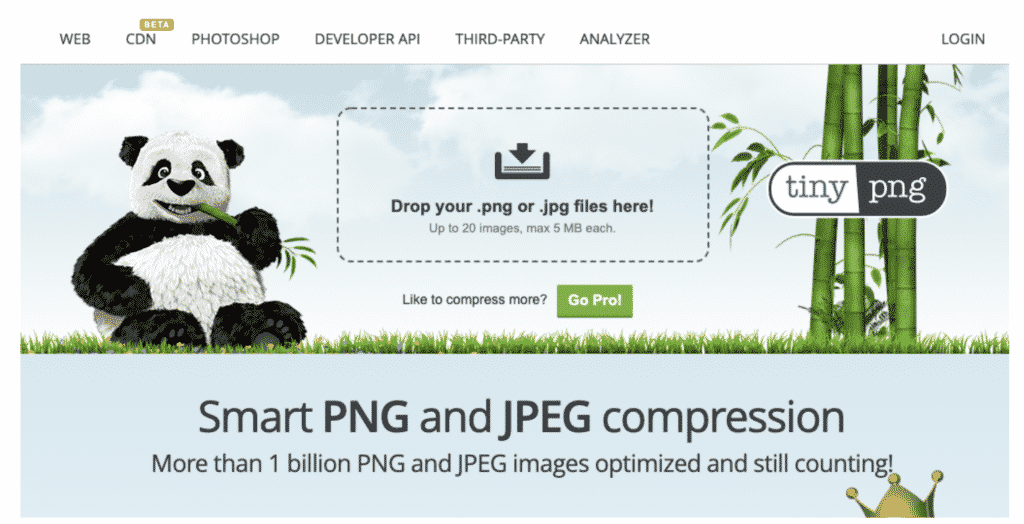
Provide Alt Text for Images
Adding alt text to images and graphic files is still a necessary step in on-site SEO. Adding alt text to images improves your SEO and helps search engines such as Google better understand the images on your website.
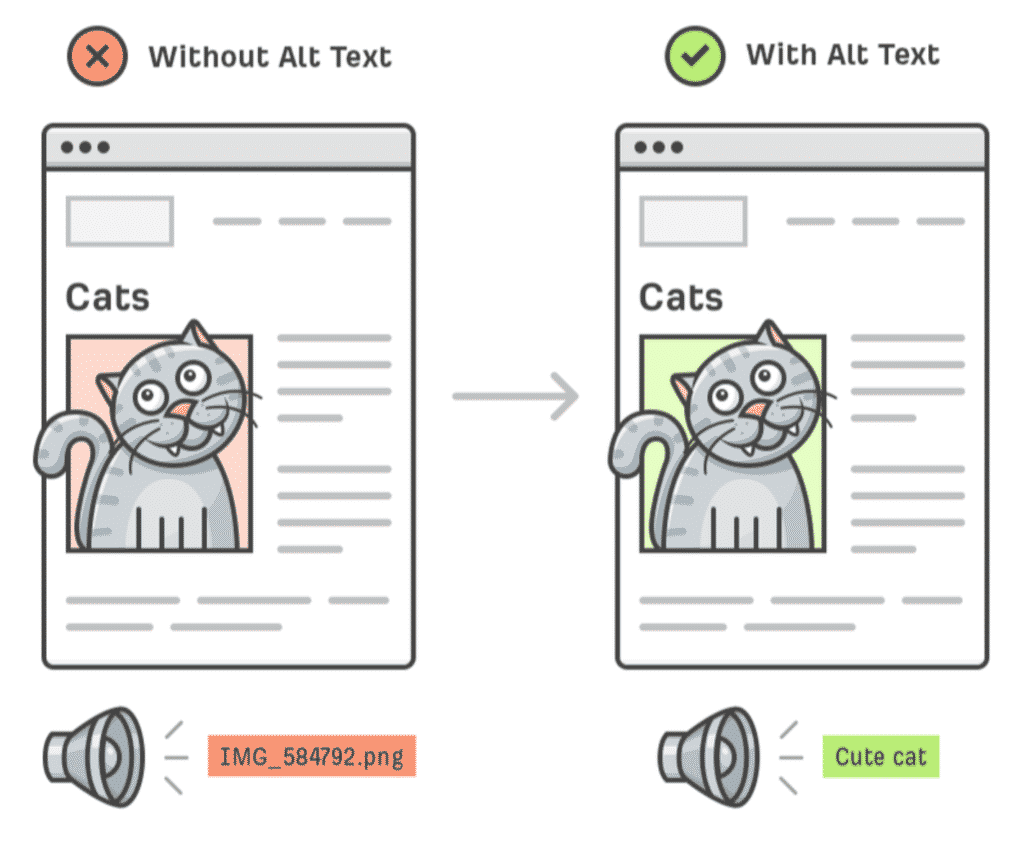
Here is what Google suggests when writing alt text:
“When choosing alt text, focus on creating useful, information-rich content that uses keywords appropriately and is in context of the content of the page. Avoid filling alt attributes with keywords (keyword stuffing) as it results in a negative user experience and may cause your site to be seen as spam.”
STEP #9: KEEP YOUR WEBSITE UP TO DATE.
It’s essential to keep your website up to date to increase your SEO rankings and boost your organic search engine traffic. Updated content will give your website a fresh start and show Google that your website is a reliable source. When Google sees that your content is new, you’ll get a boost in traffic. Updating your website content provides a lot of good benefits to your pages and helps in rankings. If you search in google for any term, you can see that most of the results are from last year or even a few years back. For example, a search for “best baseball bats” on Google brings up these results:
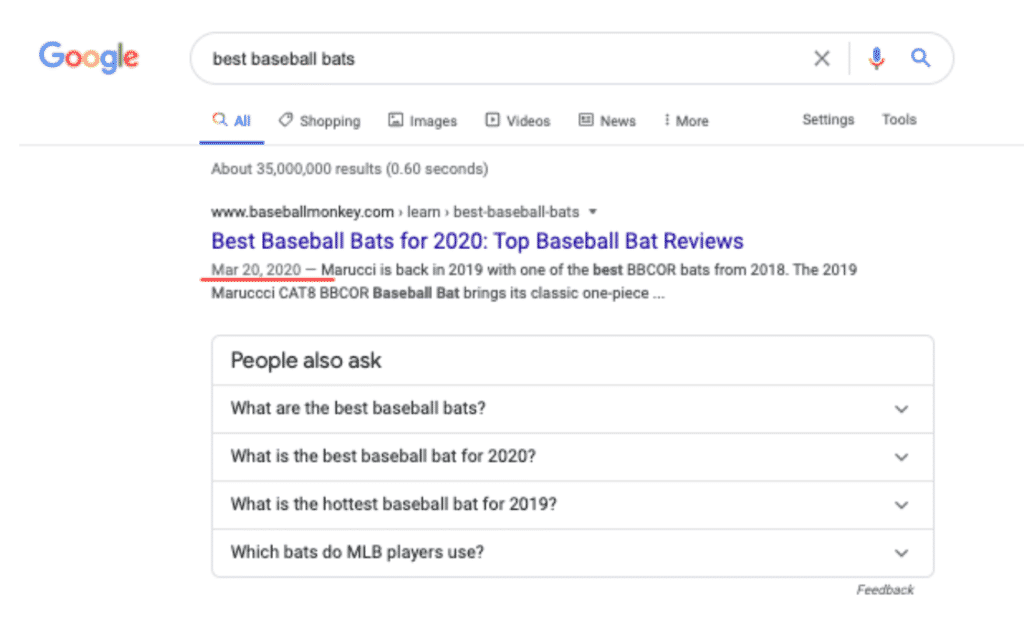
Updating your website content is essential because it shows people that your content is up to date with their searches. Google’s algorithm likes fresh content and tends to rank higher if more people click on your content from the search engine results page. So updating your content will make your website more appealing to the audience and show Google that your website is a better resource than other ones and should rank higher.
LET ME KNOW WHAT YOU THINK.
There you have it, this is how to create an effective SEO strategy in 2022. I hope my 9-step SEO business strategy in 2022 will help you improve in Google rankings. Let me know what is your favorite SEO strategy step down in the comments!

